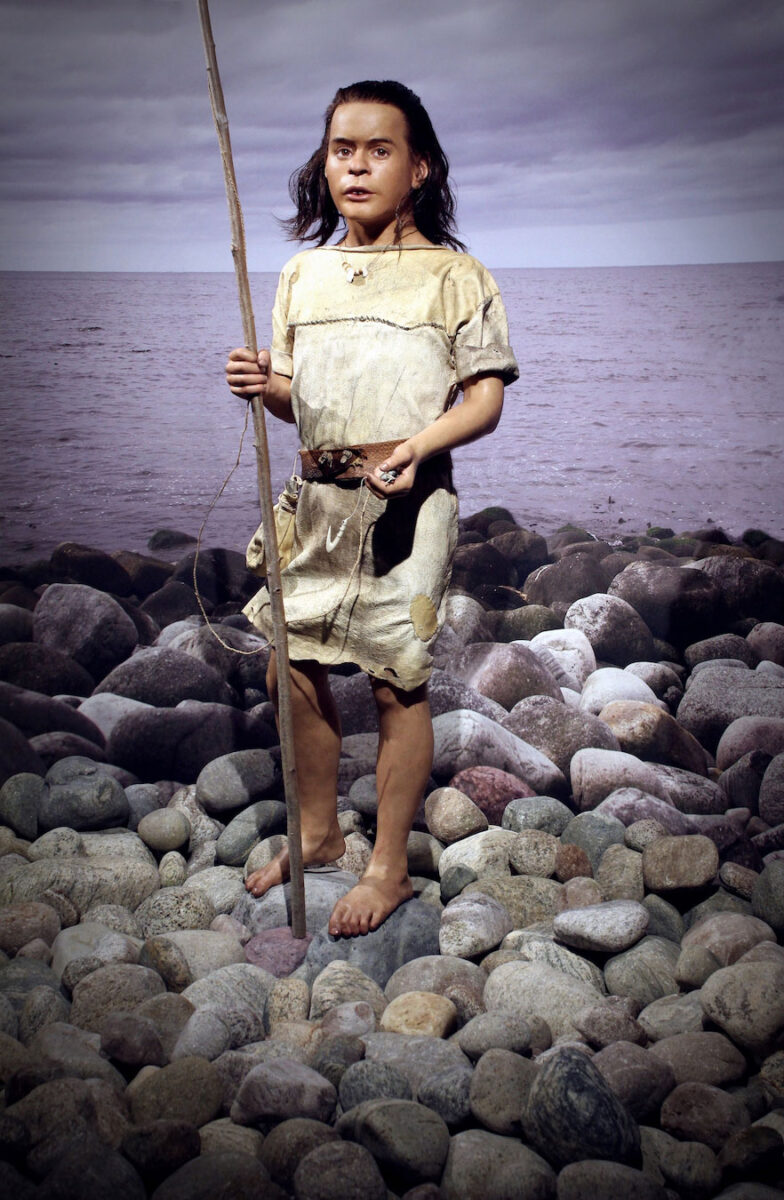The skeleton of a boy, who died 8,300 years ago, found in Norway in 1907, has been thoroughly analyzed, leading to new conclusions and a reconstruction of the 15 year-old teenager.
DNA analysis showed that “Vistegutten” (as the skeleton is known, meaning “the boy from Viste”) has been a well-fed, short boy who lived about 8,300 years ago somewhere along Norway’s western coast. His remains have been found in a Mesolithic cave in Randaberg, in 1907. Vistegutten is on permanent display at the Hå Gamle Prestegard museum in southern Norway.
The condition of the boy’s skull, described as scaphocephaly, meant that his skull bones had fused too early resulting to a backward growing of his head. However, this condition does not mean that the boy suffered from developmental problems of intellectual disabilities, as osteologiust Sean Dexter Denham of the University of Stavanger’s Museum of Archaeology pointed out.
Furthermore, DNA analysis has shown that Vistegutten had brown eyes, dark hair and an intermediate skin tone.
As forensic artist Oscar Nilsson said to Live Science about the position of the skeleton found: “Either he was placed like this after his death, or he actually died in this position”, adding that “This can give the impression of a lonely boy, waiting in vain for his friends and family to show up … but we know nothing about how he died.”
The reconstruction was made based on two CT scans of the skull. Nilsson was able to create a 3D-printed plastic replica. As he was not sure about the facial tissue thickness, he relied on measurements of modern Northern European 15-year-old boys.
An interesting fact is that while Nilsson initially wanted to give the boy a subtle smile, “as he got deeper into the project, he could not get rid of a feeling of a lonely boy”. “I imagine him on his way to the sea (which at his time was extremely near the cave) to catch some fish. It is very windy in this part of Norway, so I worked quite a lot to make it look as if the wind blows in his hair and clothes,” Nilsson added.


